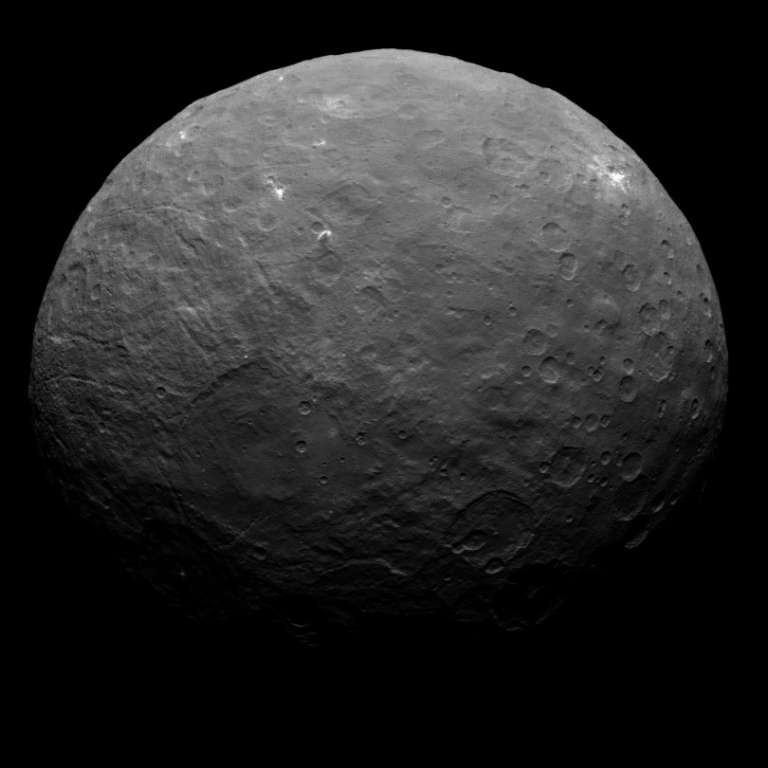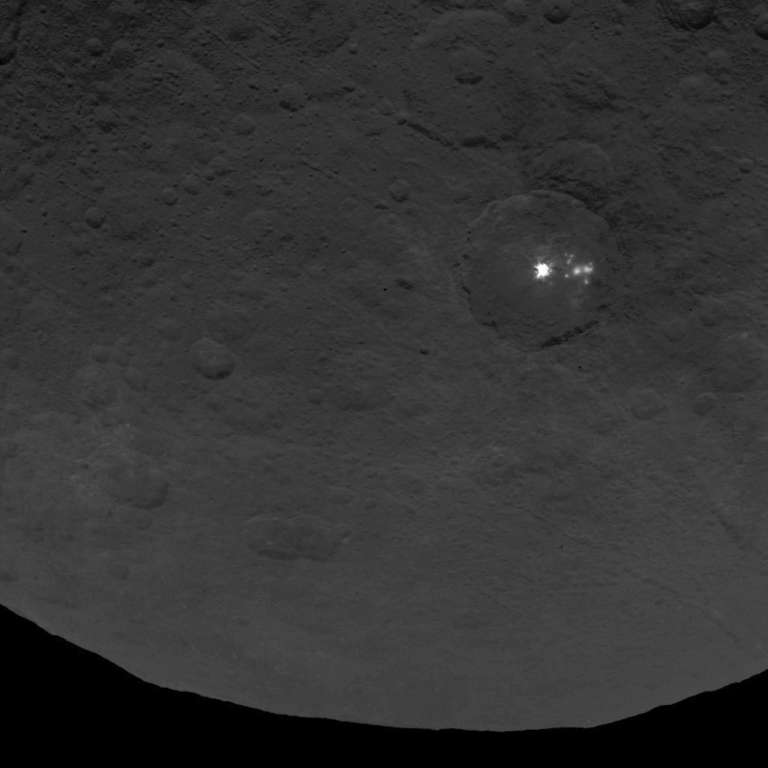Andrew Rivkin • Jul 21, 2015
Dawn at Ceres: A haze in Occator crater?
While Pluto deservedly stole the headlines last week, Chris Russell’s Dawn update at the Exploration Science Forum at NASA Ames reminded us that the other dwarf planets are also sharing their secrets with eager scientists. As an eager scientist unaffiliated with the Dawn mission, I’m happy to share what I heard!
Russell’s update began with some relatively mundane results: Ceres’ North Pole is pointing in a different direction than ground-based measurements suggested, leading to slightly different lighting conditions than they were anticipating. Ceres is also a bit smaller than they were expecting, which leads to a slightly larger density. Again, nothing terribly newsworthy.
However, Russell then began to discuss the surface features on Ceres, and things rapidly became much less mundane. He suggested that the distribution of bright spots on Ceres didn’t look like they were consistent with impacts. This was a bit hard to understand, particularly since I was still trying to work through the North Pole results, but I took it to mean that while there were many bright spots across the surface, the relative numbers of large versus small ones don’t look like what we’d expect if they were all simply craters. However, it may also have been a statement about the distribution of these bright spots across the surface in terms of latitude or longitude.

He then focused on the most famous complex of bright spots, in Occator crater. This group is also known as “Spot 5” from earlier Hubble Space Telescope observations. Russell said that a “haze” was visible in this crater at certain times of day, and that it was seen more than once. A follow-up question, the only one there was time for, established that the haze was confined to the crater itself.

There are a lot of exciting possibilities as to what this means, though the Dawn project itself will need to clarify exactly what was observed. One could easily interpret the bright spots as ice (as many have done in past months), and imagine that what was seen can be associated with the water vapor signature seen by the Herschel spacecraft. However, “haze” usually implies a particulate component, and the team itself seemed to be favoring a non-ice composition for the bright spots in recent weeks. A “haze” rather than a “plume” or “jet” also suggests material is sticking around, which is difficult to imagine (though Ceres’ relatively large gravity may help in that regard).
Finally, I’ll note a possible connection to a similar claim made by the Framing Camera team at this past LPSC: They saw Spot 5 from beyond the limb of Ceres, which they argued meant it was elevated. However, I haven’t heard this claim again and it’s possible that an updated shape model would show a sight line to the surface.
Given the importance of Russell’s announcement of what amounts to a transient, localized atmosphere on Ceres, I would expect a more official account to emerge before long!
Support our core enterprises
Your support powers our mission to explore worlds, find life, and defend Earth. You make all the difference when you make a gift. Give today!
Donate

 Explore Worlds
Explore Worlds Find Life
Find Life Defend Earth
Defend Earth

